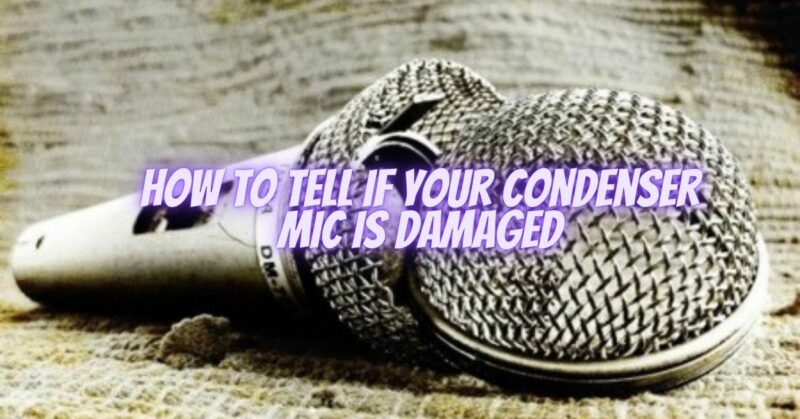Condenser microphones are widely used in professional audio recording, broadcasting, and podcasting due to their high sensitivity and superior sound quality. However, like any electronic device, condenser microphones can sustain damage over time, impacting their performance and audio capture capabilities. In this article, we will discuss some common signs that can help you determine if your condenser microphone is damaged and in need of repair or replacement.
- Distorted or Muffled Sound: One of the most apparent indicators of a damaged condenser microphone is a noticeable change in sound quality. If you notice that your recordings or audio outputs are distorted, muffled, or lack clarity, it may indicate a problem with the microphone. Distorted sound can occur due to issues such as a damaged diaphragm, faulty electronic components, or poor internal connections.
- Increased Background Noise or Hiss: A well-functioning condenser microphone should have a low self-noise level, allowing it to capture audio with minimal background noise. However, if you start to notice an increase in background noise or a persistent hissing sound in your recordings, it could be a sign of a damaged microphone. Possible causes include deteriorated electronic components, damaged diaphragm, or problems with the microphone’s preamplifier circuitry.
- Inconsistent or No Output: When a condenser microphone is damaged, it may exhibit inconsistent output levels or even no output at all. If you find that your microphone’s output levels vary significantly or that it stops producing any sound, it could indicate a problem with the microphone capsule, connector, or internal wiring. In such cases, it is advisable to check the connections, try different cables and audio interfaces, and if the issue persists, consider professional inspection or repair.
- Unusual Hum or Buzzing Noises: Another sign of a damaged condenser microphone is the presence of unusual hum or buzzing noises in your recordings. These noises can occur due to various factors, including electromagnetic interference, grounding issues, or internal electronic component malfunctions. If you consistently encounter these noises even after changing cables or audio interfaces, it is likely that your microphone requires attention.
- Inconsistent Sensitivity: A damaged condenser microphone may exhibit inconsistent sensitivity levels, meaning that it may not respond uniformly to sound sources. You may notice fluctuations in volume or a reduced ability to capture quieter sounds. This inconsistency can stem from problems with the microphone’s diaphragm, circuitry, or amplification components. If you find that your microphone’s sensitivity has significantly changed or is unpredictable, it is advisable to have it checked by a professional.
- Physical Damage: While not directly related to audio performance, visible physical damage to the condenser microphone should not be overlooked. Cracks in the microphone body, dents, or other visible signs of impact can indicate internal damage to critical components. Physical damage can affect the microphone’s overall functionality and audio quality, warranting immediate attention.
Conclusion: Monitoring the performance of your condenser microphone is crucial to ensure accurate and high-quality audio recordings. By being attentive to signs such as distorted sound, increased background noise, inconsistent output, unusual noises, inconsistent sensitivity, or physical damage, you can determine if your condenser microphone is damaged and needs repair or replacement. Remember, if you suspect any issues with your microphone, it is best to consult a professional audio technician or the manufacturer for proper diagnosis and resolution.


